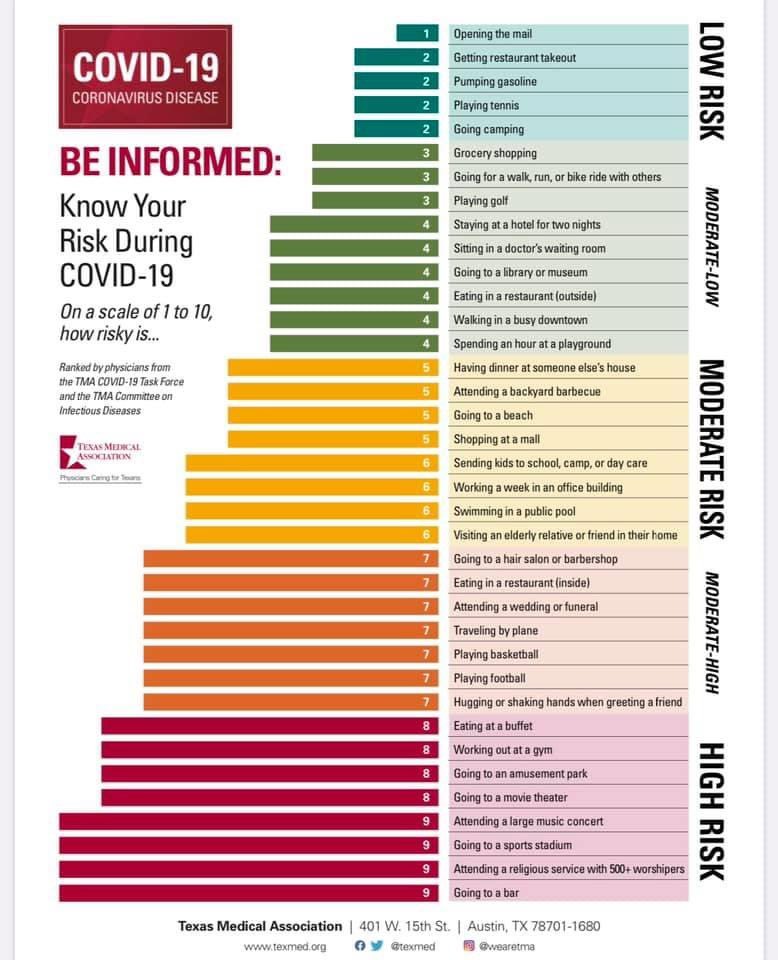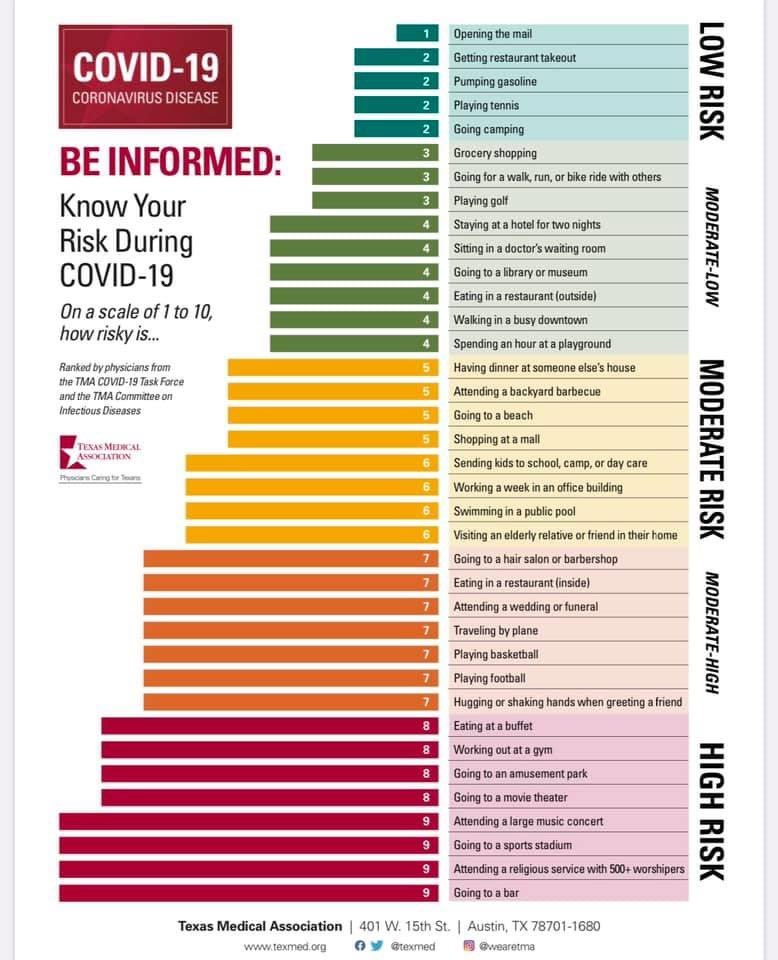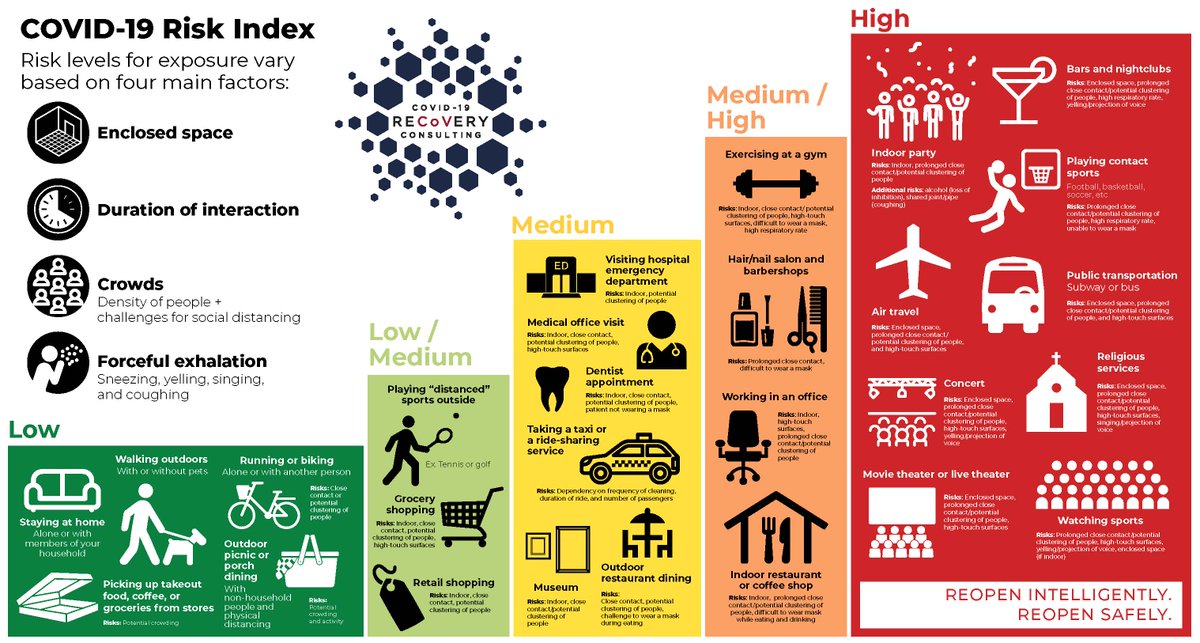1/ As we approach #July4th, we must acknowledge that this Independence Day *MUST* be unlike any we've ever experienced. Many of the common July 4th activities carry high risk of #COVID19, as beautifully depicted by two recently developed COVID risk indexes.
A short on these:
on these:
A short
 on these:
on these:
2/ The first is put out by @texmed (which also just withdrew its support from the Republican National Convention taking place indoors in Houston, given the risk)
This risk index was developed by physicians on the TMA COVID-19 Task Force and TMA Committee on Infectious Diseases
This risk index was developed by physicians on the TMA COVID-19 Task Force and TMA Committee on Infectious Diseases
3/ This is easy to understand (simple 1-10 scale) & covers some (but def not all!) common activities
Importantly, there are far more items at the high (7-9) of the risk scale than low (1-3) end
Personally, I think this "undersells" risk of some activities it calls mod risk...
Importantly, there are far more items at the high (7-9) of the risk scale than low (1-3) end
Personally, I think this "undersells" risk of some activities it calls mod risk...
4/ The 2nd index was developed by @ZekeEmanuel, @SaskiaPopescu, & @DrPhillipsMD. More info about it available in Zeke Emanuel's thread here: https://twitter.com/ZekeEmanuel/status/1278410182545018885?s=20
5/ This index nicely explains *WHY* activities are high vs low risk (dependent on crowding, likelihood of "forceful exhalation," duration of interaction, & presence/absence of an enclosed space). Also great infographics
In general, this is a little more risk averse than TX model
In general, this is a little more risk averse than TX model
6/ Interesting to look at differences between the 2 - many (?most) activities on TX model are 1 risk level lower than on Emanuel/Popescu/Phillips model. No items were higher risk on the TX model than on the E/P/P model, though some things listed on one but not the other

 Read on Twitter
Read on Twitter





